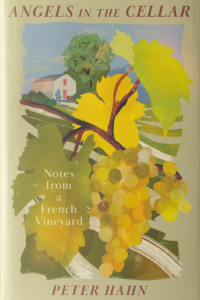In the vineyard
Organically grown grapes – no herbicides, no pesticides, natural compost and other organic fertilizer only.
Tilled soil under the rows – worked with ploughs several times a year to keep the soil aerated, rich and biologically active.
Native grasses planted between the rows to add to a self-sufficient ecosystem and inhibit erosion.
De-budding and de-shooting by hand to ensure that each vine is focusing all of its energy on the selected shoots and grape bunches, limiting the number of bunches produced by each vine.
Leaf-thinning by hand of each vine to allow each bunch greater exposure to sunlight and keeping the bunches ventilated thereby reducing disease.
Bunch-thinning by hand where necessary to eliminate any bunches affected by sour rot or bunches ripening unevenly.
Hand-picked grapes – at harvest time rigorous selection in the vineyard choosing only the ripest, healthiest bunches – leaving the rest on the ground to nourish the vineyard Grapes are picked at the coolest hours of the harvesting day and put in small baskets and brought to the press quickly (within an hour of picking). These practices ensure that the grapes come to the press whole (no broken grapes leaking juice) which reduces oxidation and fungal disease risk.
The combination of these practices lead to very low yields per acre, and therefore highly limited production.
In the cellar
Use of naturally occurring yeasts only (the yeasts which develop on the skins of the grapes as they mature in the vineyard vs addition of commercial yeast to the juice after pressing to encourage fermentation)
Barrel-fermentation and aging – for a year or more prior to bottling.
Stirring the lees in the barrels several times each month by hand to encourage natural aromas and protect the juice from oxidation.
No fining or cold-treatment of the wine.
Use of the absolute minimum of sulfite to conserve the wine.
Minimal use of new oak barrels to avoid the classic “wood” tastes found so often in white wine which mask the true flavors and aromas of the grapes.
Corks are from the only organic cork tree plantations in Portugal, the labels are made using water-soluble ink rather than oil-based products. All of this costs more but is part of the philosophy.
What few people realize is how much can actually be added to wine to make it ‘artificial’ and standardized. Here is a list of some of the things winemakers add in Europe (probably the most restrictive and controlled winemaking region in the world!): click here
At le Clos de la Meslerie we use only ONE of the above, sulfites in minimal doses to protect the wine from spoilage.
Non-sulfited wines are extremely fragile and particularly sensitive to fluctuations in temperature and other events that can cause spoiling leading to bad aromas and flavors. Because so many of my customers are in countries outside of France, I can’t take the risk of transporting a non-sulfited wine that far. When I do make a non-sulfited batch I hope our overseas customers will come here to drink it with me!
The wine-making facility
The facility has been renovated and equipped with the following basic principles:
Allow for a process, from the arrival of the grapes to bottling, which involves minimal mechanical intervention – minimal pumping (use gravity to move the wine – eg. From settling cuves to the barrels).
Allow for ease of cleaning – cleanliness in the wine-making facility is critical in ensuring no wine contamination which can cause corked wine or other off-flavors.
Be environmentally friendly – No synthetic chemical cleaning agents are used, only high-pressure hot water.
The press
While there are a lot of things I find special and unique about this place, the press is perhaps the most unique aspect of how we work. We press the grapes by hand! This probably deserves a little more explanation.
When I embarked on the project of renovating and restoring the “chai” (the winemaking building) it was literally falling apart. It was piled high with old equipment and various junk, water leaked through the holes in the roof every time it rained, all the electrical connections were burned out, the pipes rusted through… Going through it with flashlights for days on end we sorted through all the junk, gradually emptying it out. Little by little we revealed two old presses, between 50 and 100 years old. They were beautiful examples of mechanical prowess, hulks of metal, oak and concrete, solid as old ships, simple in design. They had clearly not been used for decades.
My thinking on pressing initially had been to get one of the new pneumatic presses which are considered the most qualitative of the modern electric presses. I thought we would give the old ones a lick of paint and keep them as decoration, and a quaint reminder of the past. However, one day I was showing the old presses to Vincent Carême, a close friend, an invaluable advisor and, I believe, one of the best winemakers in the Loire. He looked at the more recent of the two and said, with a smile, “you know, I bet you could use this press”. This was the beginning of a months-long adventure of restoring the old beauty. It involved carpenters creating reproductions of some of the old wooden pieces, of finding some old-timers to come and look at the press who remembered how it worked, showing us the various stages of pressing, and of sanding, cleaning, oiling and painting. When we finally had restored it and for the 2008 harvest were using it for the first time, the word got out about the crazy American and his old press. We had local people, winemakers and ‘civilians’ alike stopping by just to take a look at the strange, archaic spectacle.
While there may be some novelty value in the whole “press story” there are actually technical and quality elements that come into play. Using a press of this kind means that we have no choice but to press slowly and gently and simply can’t build up the pressure that modern presses can, therefore we only get “first press” juice. In my mind, this gives us the best of the grapes. It also means of course that we get a lot less juice (probably half) than if we used a modern press. This makes the wine, unfortunately, even more scarce.
The Rest
While our focus here is on wine, the philosophy goes for the entire estate and the way we live and work here.
We cultivate our own fruit and vegetables organically. The orchard that Mr. Sauger, the previous owner, left us as one of his many legacies (including a dazzling array of perennial flowers throughout the estate) contains a myriad of trees: apple, pear, plum, peach, cherry, quince, walnut…. We grow strawberries, raspberries, black and redcurrants and the hedgerows are filled with wild blackberries. In the vegetable garden, we grow heirloom tomatoes, string beans, cabbage, potatoes, lettuce, zucchini, squash, and so on. We have a herb and spice garden as well. All grown organically, fertilized from our own compost.
We preserve our fruit and vegetables so that we can enjoy them year-round. We raise free-range, organic chickens for their eggs and their meat. I also hunt and we don’t waste any of the game, which is about the most organic and healthy meat you can get a hold of!
Not unrelated, we also keep bee-hives. The bees not only provide us with delicious honey but of course also play a key role in the whole Meslerie ecosystem, carrying pollen from flower to flower, plant to plant…. keeping the magic alive.

